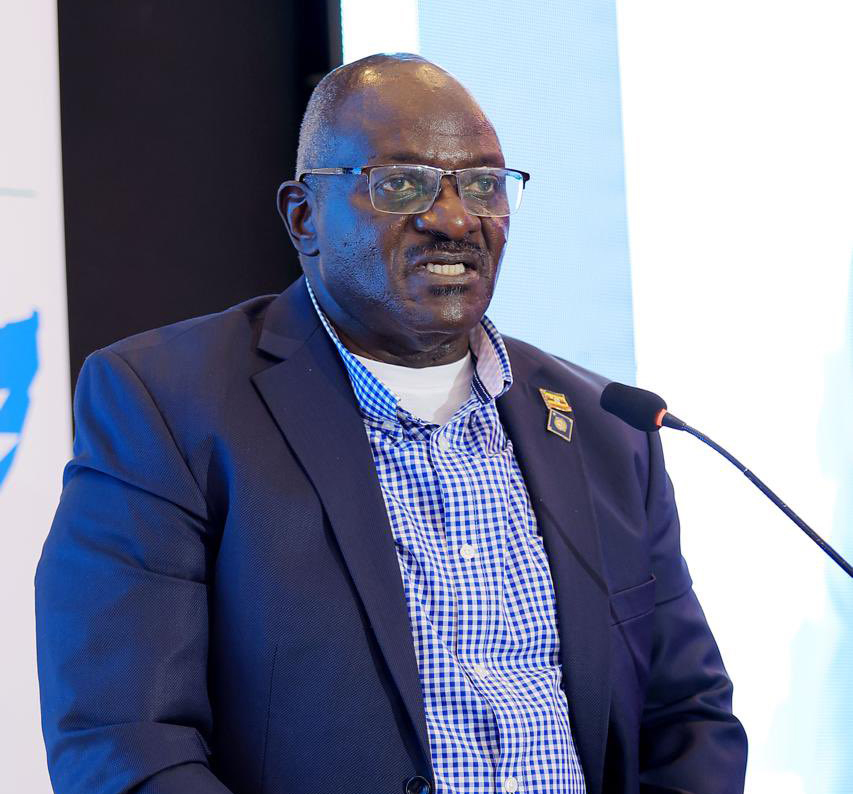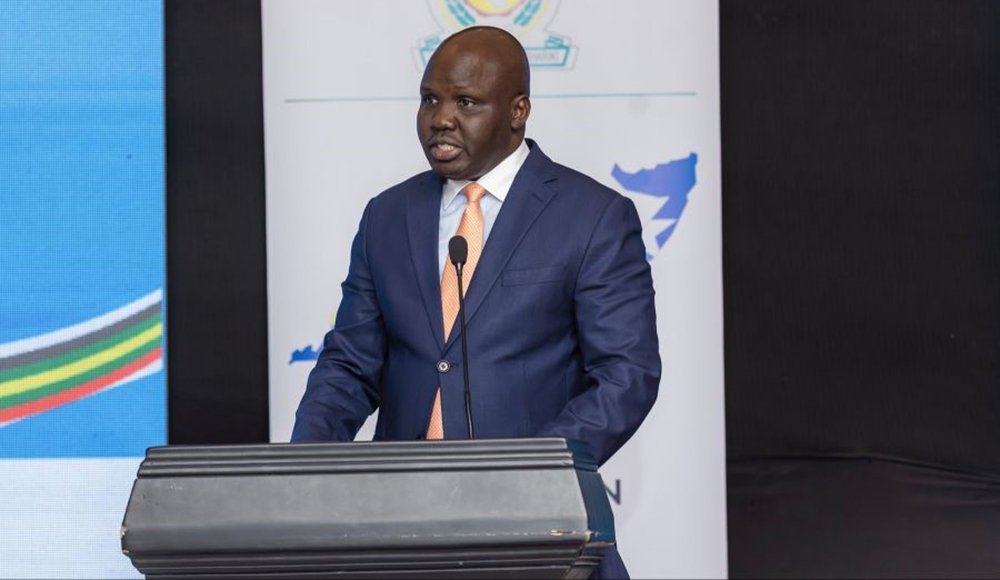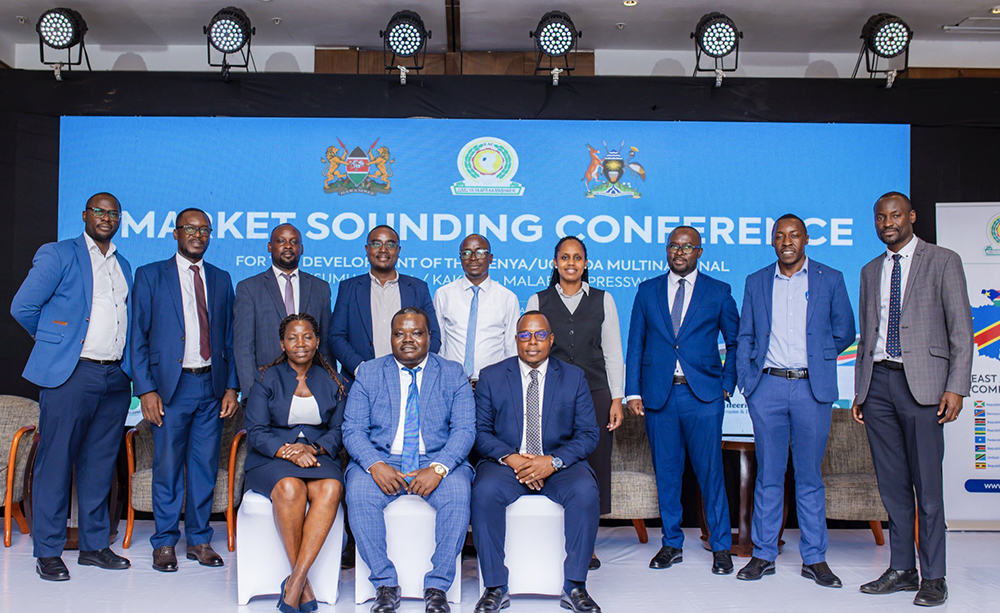Financiers, private sector endorse Kisumu–Busia/Kakira–Malaba 200km Expressway project
Sources at the Works ministry stated that once developed, the corridor will redefine mobility and trade between the two countries, cutting travel time, easing congestion and enhancing the flow of goods and people between the two countries.
Minister of Works and Transport Gen. Edward Katumba Wamala and other delegates after the Tuesday Market Sounding Conference in Kampala.
KAMPALA - Movement between Uganda and Kenya via the Northern Corridor is set for transformation with confirmation of the Kisumu–Busia / Kakira–Malaba multinational Expressway as a feasible and investment-ready project.
The planned expressway is one of East Africa’s busiest transport routes within the Trans-African Highway and the EAC Regional Trunk Road Network.
The announcement was made earlier today, October 21st, in Kampala during a Market Sounding Conference, where government officials from the two countries, financiers and private sector leaders endorsed the close to 200-kilometre expressway as a key infrastructure priority for the region.
The Uganda team was led by Gen. Edward Katumba Wamala, the minister of Works and Transport.
Minister of Works and Transport Gen. Edward Katumba Wamala and other delegates after the Tuesday Market Sounding Conference in Kampala.
The project is supported by the African Development Bank (AfDB) and implemented under the EAC framework, with grant financing provided through the NEPAD Infrastructure Project Preparation Facility (NEPAD-IPPF).
Sources at the Works ministry stated that once developed, the corridor will redefine mobility and trade between the two countries, cutting travel time, easing congestion and enhancing the flow of goods and people between the two countries.
The conference served as a platform to examine investment opportunities, raise critical questions, offer insights and explore potential partnerships.
It also provided an opportunity to gather market feedback, which will help structure the project into a bankable, sustainable and impactful regional investment.
Participants reviewed the outcomes of the feasibility studies—including traffic projections, preliminary designs, environmental and social impact assessments, and cost estimates—all of which confirmed the project’s strong technical and economic viability.
A release issued by the East African Community states that during the Kampala meeting, delegates received a report whereby the feasibility studies recommend major upgrades on both sides of the border.

EAC Deputy Secretary General in charge of Infrastructure, Productive, Social and Political Sectors, Andrea Aguer Ariik Malueth addressing the conference.
In Uganda, a new 60-kilometre greenfield expressway will be developed between Jinja and Busesa through a Public–Private Partnership, plus dualling of the Busesa–Malaba and Busitema–Busia sections. While Lwakhakha–Bumbobi will remain a single carriageway.
On the Kenyan side, works will involve: dualling the Kisumu bypass and upgrading the Kimaeti–Lwakhakha road to bitumen standards.
The Busia and Malaba One Stop Border Posts will also be rehabilitated to enhance clearance and efficiency.
The technical teams revealed that these developments will strengthen regional connectivity, open new economic opportunities and symbolise East Africa’s commitment to seamless integration.
Gen (Rtd.) Katumba, while delivering his remarks, underscored the strategic importance of the Northern Corridor as the main transport artery for Uganda and the Great Lakes Region, connecting Kenya, Uganda, Rwanda, Burundi, the DRC and South Sudan to the port of Mombasa.
“The project aligns with Uganda’s Vision 2040, which seeks to modernise the country’s road network to world-class standards, targeting an average paved road density of 100 km per 1,000 sq. km,” he noted, adding that “the active participation of the private sector through Public–Private Partnerships and other blended financing models will be critical," he added.
Relatedly, the EAC Deputy Secretary General in charge of Infrastructure, Productive, Social and Political Sectors, Andrea Aguer Ariik Malueth, highlighted the importance of designing a smart corridor that integrates digital technology, safety and social inclusion.
He added that 80 % of projects fail at the preparation stage.
"The support provided by EAC Development Partners has enabled the Community to prepare high-quality, bankable regional infrastructure projects that have successfully attracted both public and private financing,” he noted.
Eng. Charles Obuon, Director in charge of Public–Private Partnerships at the Kenya National Highways Authority, emphasised the project’s catalytic role in addressing cross-border infrastructure gaps.

Delegates at after the Tuesday Market Sounding Conference in Kampala.
“Regional transport infrastructure remains poorly connected due to missing links on cross-border corridors. This expressway project will catalyse economic growth and enhance the competitiveness of the EAC region.”
Echoing similar sentiments, Eng. Charles Wani, Commissioner for National Roads in Uganda’s Ministry of Works and Transport, remarked, “Large-scale infrastructure investment cannot be achieved in isolation. We must embrace Public–Private Partnerships and other blended financing models to deliver transformative projects.”
Facts about the project
The expressway forms part of a broader network of multinational road corridors being developed across East Africa to enhance connectivity, facilitate trade and promote regional integration.
These include: the Arusha–Namanga–Athi River (235 km), Voi–Taveta/Holili–Moshi–Arusha (240 km), Malindi–Lungalunga–Tanga–Bagamoyo (400 km), and the Masaka–Mutukula–Kumunazi–Bugene–Kyaka corridor linking Uganda and Tanzania.
Others are: the Lusahunga–Rusumo–Kayonza–Kigali (162 km), Uvinza–Kanyani–Gisuru–Rusengo–Bugarama (375 km), Kisumu–Busia/Malaba–Jinja Expressway (256 km), and Ngozi–Kirundo–Kanyaru Bas–Nyamiyaga (176 km) roads.
These corridors form the backbone of the EAC’s infrastructure programme, designed to reduce transport costs, attract investment and accelerate the free movement of goods and people across the region.